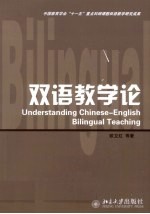
- 作 者:欧卫红等著
- 出 版 社:北京市:北京大学出版社
- 出版年份:2009
- ISBN:9787301158326
- 标注页数:319 页
- PDF页数:332 页
请阅读订购服务说明与试读!
订购服务说明
1、本站所有的书默认都是PDF格式,该格式图书只能阅读和打印,不能再次编辑。
2、除分上下册或者多册的情况下,一般PDF页数一定要大于标注页数才建议下单购买。【本资源332 ≥319页】
图书下载及付费说明
1、所有的电子图书为PDF格式,支持电脑、手机、平板等各类电子设备阅读;可以任意拷贝文件到不同的阅读设备里进行阅读。
2、电子图书在提交订单后一般半小时内处理完成,最晚48小时内处理完成。(非工作日购买会延迟)
3、所有的电子图书都是原书直接扫描方式制作而成。
Chapter One Basic Theories 1
1.1 Theories of first language acquisition and learning 1
1.1.1 Language acquisition and language learning 1
1.1.2 Theories of first language acquisition 2
1.1.3 Language acquisition view of cognitive linguistics 9
1.1.4 Language development 12
1.1.5 The critical period hypothesis 14
1.2 Theories of second language learning and acquisition 18
1.2.1 Critical period of second language learning and acquisition 18
1.2.2 Theories of second language acquisition 20
1.2.3 Practical pedagogical implications of SLA research 27
1.2.4 Individual learner differences and second language acquisition 30
1.2.5 Interlanguage 35
1.3 Theories of bilingual learning and acquisition 43
1.3.1 Appellation 43
1.3.2 Definitions 44
1.3.3 Types of bilingual teaching models 44
1.3.4 Bilingual education examples across the world 47
1.3.5 Chinese-English bilingual teaching in China 55
1.3.6 The critical period hypothesis of bilingual teaching 60
Chapter Two Teaching Methodology 67
2.1 Main ideas about English teaching methodology 67
2.1.1 Language and language teaching 67
2.1.2 The New National English Curriculum 72
2.1.3 Current English teaching methodology 73
2.1.4 Lesson planning 81
2.1.5 Classroom management 87
2.1.6 Assessment in language teaching 88
2.1.7 Classroom English 90
2.2 Main ideas about subject methodology 93
2.2.1 Main ideas about math teaching methodology 93
2.2.2 Main ideas about science teaching methodology 104
2.2.3 Main ideas about music teaching methodology 113
2.3 Main ideas about bilingual teaching methodology 125
2.3.1 Teaching goals 125
2.3.2 Teaching models and strategies 126
2.3.3 Code-switching 134
2.3 4 Bilingual teaching methodology in some subjects 173
Reference books 182
Chapter Three Grammatical Points for Bilingual Teaching 185
3.1 Verb and tense 185
3.1.1 Main verbs 185
3.1.2 Auxiliaries 186
3.1.3 Tenses 187
3.2 Subject-Verb concord 192
3.2.1 Brief introduction about concord 192
3.2.2 The common rule of agreement 193
3.3 Participle 196
3.4 Commonly used sentence patterns 197
3.4.1 Existential sentence pattern 197
3.4.2 It-patterns 197
3.4.3 Conditional sentences 198
3.5 Simple sentence 199
3.5.1 Positive and negative statements 199
3.5.2 Questions 200
3.5.3 Commands 201
3.5.4 Exclamations 202
3.6 Clause 202
3.6.1 Clause element 202
3.6.2 Basic clause types 202
3.7 Degree and construction 204
3.7.1 Degree of adjectives and adverbs 204
3.7.2 Typical comparative structures 205
3.8 Direct and indirect speech 208
3.9 Infinitive 209
3.10 Passive voice 209
3.11 Some issues 210
Reference books 213
Chapter Four Resources for Bilingual Classroom Teaching 215
4.1 Subject English words and expressions 215
4.1.1 Mathematics 215
4.1.2 Science 236
4.1.3 Music 248
4.2 Sample lesson plan analysis 276
4.2.1 Sample 1 276
Analysis of Sample 1 281
4.2.2 Sample 2 282
Analysis of Sample 2 284
4.2.3 Sample 3 285
Chapter Five Teacher Development 295
5.1 Introduction to teacher development and its research 293
5.1.1 Some concepts in teacher development 293
5.1.2 The importance of teachers'professional development 295
5.1.3 Approaches to teacher development 296
5.2 Teacher development in bilingual teaching 297
5.2.1 Building subject expertise 298
5.2.2 Improving Language proficiency 299
5.2.3 Developing bilingual teaching skills 300
Glossary and Index 307
